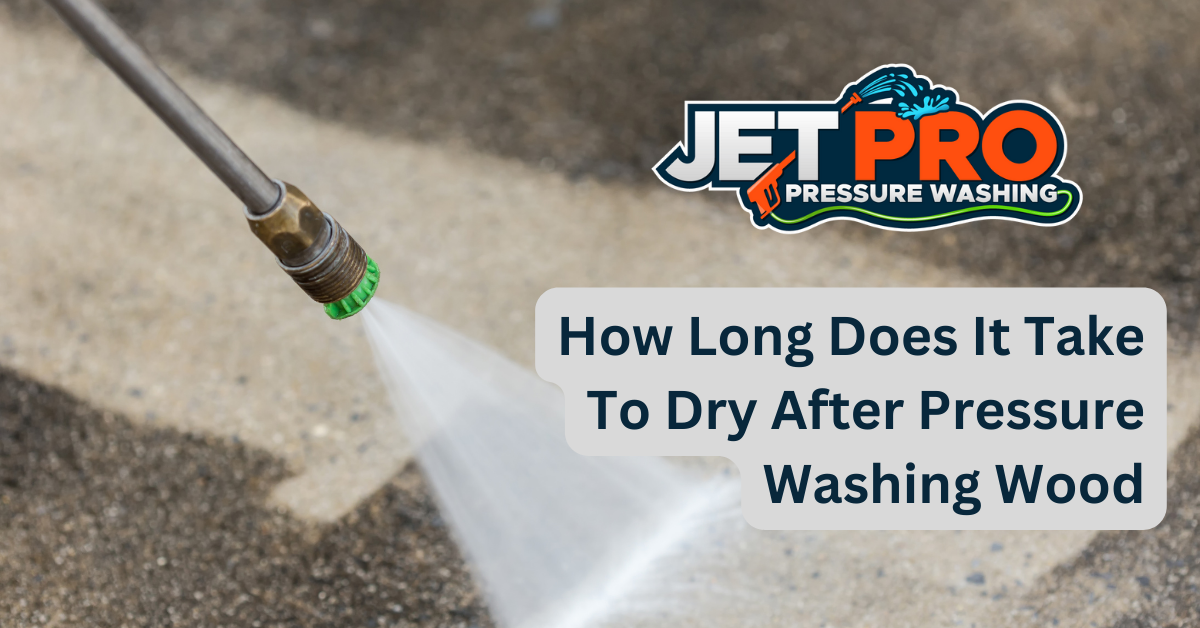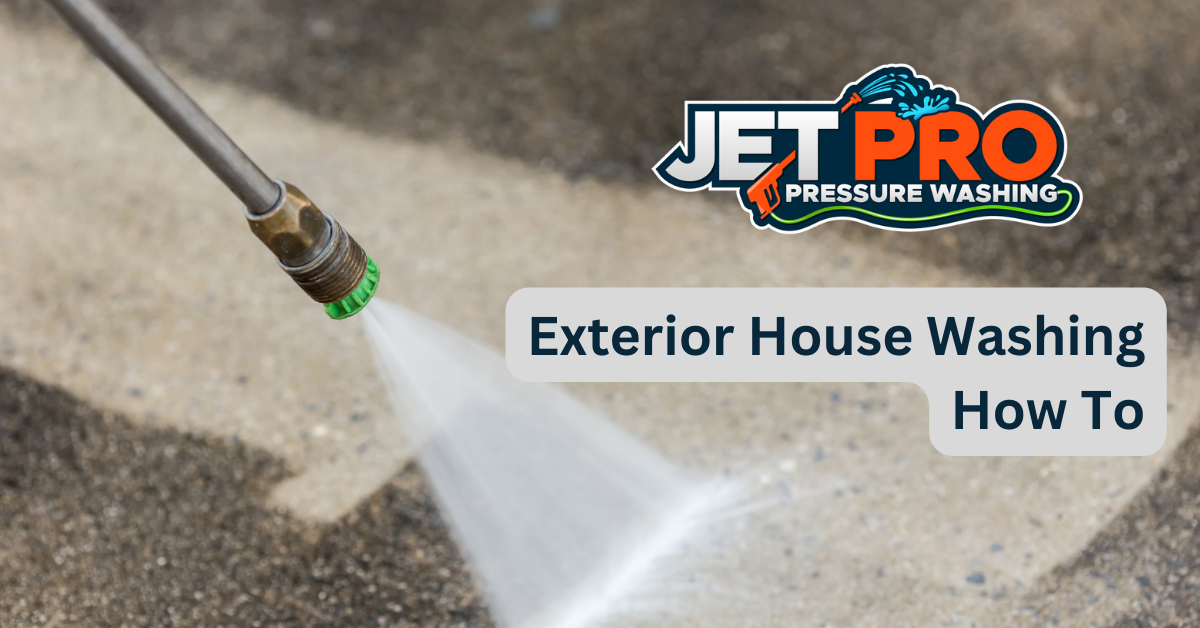When it comes to revitalizing a weathered deck or siding, pressure washing wood is an effective solution. However, the drying time is dependent on various factors, including the wood’s thickness and type, humidity levels, and sun exposure. As the saying goes, “Rome wasn’t built in a day,”and similarly, your wood won’t dry after pressure washing in a day. For professional power washing services, consider contacting a reputable company like ABC Power Washing.
However, there are a few tips that can help speed up the process. In this article, we will discuss the factors that affect drying time, and the tips to help speed up the process.
If you’re wondering how much layer of wood is removed when pressure washing or what to use while pressure washing concrete, you’ve come to the right place. Pressure washing wood can be a great way to spruce up a tired, old deck or siding. But how long does it take for the wood to dry after pressure washing? The answer to this question depends on a few factors, such as the type and thickness of wood, the temperature and humidity, and the amount of sun exposure. As the old adage goes, “Rome wasn’t built in a day” and neither will your wood dry after pressure washing in a day. However, there are a few tips that can help speed up the process. In this article, we will discuss the factors that affect drying time, and the tips to help speed up the process. Additionally, if you’re interested in window cleaning, be sure to check out our guide on how to clean windows like a pro.
Factors Affecting Drying Time
The amount of time required for the drying process of wood following pressure washing is dependent on a number of factors. One of the foremost considerations is the type of wood being pressure washed. Hardwoods, such as oak, tend to take longer to dry than softer woods, such as pine.
Additionally, how much moisture was used in the pressure washing process will affect the drying time. If more water is used, the longer it will take for the wood to dry.
The environment in which the pressure washing took place is also a factor in the drying time. If the pressure washed wood is exposed to direct sunlight or high winds, the drying process will be quicker, but if it is exposed to cold or humidity, it will take longer.
Finally, the temperature of the surface of the wood being pressure washed will also affect the drying time. If the temperature is warmer, the wood will dry faster than if the temperature is cooler.
All of these factors must be taken into account when determining how long it will take for wood to dry after pressure washing.
Wood Type and Thickness
The type and thickness of the wood can have a significant impact on the amount of time it takes for the wood to be completely dry following pressure washing. A case study of a dense hardwood like oak, for example, took three days to dry, while a softer wood like pine only took one day. It makes sense that harder materials like oak, which can better resist the pressure washing, will take longer to dry since the water is more deeply embedded in the wood. Similarly, thicker pieces of wood will also take longer to dry since more water is trapped in the wood.
The moisture content of the wood is also a key factor in determining drying time. For instance, a piece of wood that is saturated with water will take longer to dry than a piece of wood that is only lightly wet. By understanding the moisture content of the wood, it is possible to estimate how long it will take for the wood to be completely dry.
Furthermore, the environmental conditions, such as temperature, humidity, and air circulation, also influence the rate of drying. For instance, warmer temperatures and higher levels of air circulation can accelerate the drying process. On the other hand, cold temperatures and low levels of air circulation can slow down the drying process. Therefore, it is important to consider the environmental factors when estimating the drying time of pressure-washed wood.
Temperature and Humidity
Temperature and humidity play a critical role in determining the rate at which pressure-washed wood dries. The higher the temperature and the lower the humidity, the faster the wood will dry. On the other hand, if the temperature is low and the humidity is high, the wood will take longer to dry.
Generally speaking, wood will take some time to fully dry after pressure washing, regardless of the temperature and humidity. Wood that is thicker and denser will take longer to dry than wood that is thinner and less dense. As a result, it is important to consider the type and thickness of the wood when deciding how long it should take to dry.
For example, if the wood is thick and dense, it will take longer to dry than if it were thin and less dense. The rate at which pressure-washed wood dries also depends on which cleaning solution was used. Some cleaning solutions will dry faster than others, so it is important to choose one that will provide the desired results in the desired amount of time.
Additionally, the amount of time the wood is left to dry can also have an effect on how quickly it dries.
Sun Exposure
Sun exposure has a significant impact on the rate at which pressure-washed wood dries, as it can speed up the drying process when the wood is exposed to direct sunlight. UV rays from the sun can evaporate the remaining moisture in the wood, which causes it to dry more quickly than it would in the shade.
Additionally, sun exposure can help to reduce the number of bacteria and mold spores that can accumulate on the wood after being pressure washed. This is because the UV rays will kill any bacteria or mold spores that remain on the wood.
The amount of time it takes for pressure-washed wood to dry will vary depending on the amount of sun exposure it receives. For instance, if the wood is exposed to direct sunlight for several hours a day, it may take a few days to completely dry. On the other hand, if the wood is in the shade, it may take much longer for it to dry completely. Therefore, it is important to ensure that the wood is exposed to direct sunlight for a few hours a day to speed up the drying process.
It is also important to note that the amount of temperature and humidity in the air can also affect the rate at which the wood dries. If the temperature and humidity are high, the wood may take longer to dry than it would in cooler, drier conditions. Therefore, it is important to take into account the temperature and humidity when determining how long it will take for the wood to dry after being pressure-washed.
Tips for Speeding Up the Drying Process
By taking into account the amount of sun exposure and temperature and humidity levels, it is possible to significantly reduce the time required for pressure-washed wood to dry.
Taking advantage of the sun’s natural drying power is one of the most effective ways to speed up the drying process. Allowing the wood to rest in direct sunlight for an extended period of time is the most efficient way to dry it. However, it is important to remember that too much sun exposure can cause the wood to become brittle and can also lead to fading.
Another way to speed up the drying process is to use fans to circulate the air around the wood. This helps to evaporate the moisture more quickly, and can also help to reduce the amount of time needed for the wood to dry. Additionally, using fans can reduce the humidity levels in the area, which can also help to speed up the drying process.
In addition to sun exposure and air circulation, the temperature and humidity of the surrounding environment can also play a role in the drying process. Higher temperatures can evaporate moisture more quickly, while higher humidity levels can slow the drying process.
By taking these factors into account, it is possible to significantly reduce the amount of time required for pressure-washed wood to dry.
Frequently Asked Questions
What type of cleaner should be used for pressure washing wood?
Using a pressure washer is an effective and efficient way to clean wood surfaces, however the type of cleaner used is just as important as the pressure washer itself.
A good rule of thumb is to use a cleaner that is made specifically for wood.
These can be found at most home improvement stores and come in both liquid and powder form.
If using a liquid cleaner, be sure to dilute it according to the instructions on the package.
For powder cleaners, mix with water in a bucket and then apply.
Both types of cleaners should be applied with a brush or low-pressure sprayer to ensure good coverage and an even finish.
Pressure washing with the right type of cleaner can help to preserve the wood and keep it looking beautiful for years to come.
Are there any risks associated with pressure washing wood?
Pressure washing wood can be a great way to clean outdoor surfaces, but there are certain risks associated with this practice.
Pressure washing can cause wood to become damaged if too much pressure is used, especially on softer woods such as cedar or redwood.
In addition, if the wood is not allowed to dry thoroughly after pressure washing, the wood can become saturated and rot.
It is important to use a cleaning solution that is specifically designed for wood, and to adjust the pressure of the washer to an appropriate level for the type of wood being cleaned.
Additionally, it is important to allow the wood to dry completely after pressure washing in order to prevent damage.
Is pressure washing wood the best way to clean the wood?
Pressure washing wood is an effective way to clean wooden surfaces, as it can quickly and easily remove dirt, mildew, and other debris. The force of the water spray can also help to remove old paint or wood stain.
Pressure washing is a relatively straightforward and inexpensive way to clean wood, but it should be used with caution, as it can cause damage to softwood or wood in poor condition. Additionally, if not done properly, pressure washing can cause water to penetrate into the wood, leading to rot and other structural damage.
Therefore, it is important to use the right equipment and technique when pressure washing wood.
How much does it cost to pressure wash wood?
Pressure washing wood is a fast and cost-effective way to give any wooden surface a deep clean. Depending on the size of the surface, the type of wood, and the difficulty of the job, the cost of pressure washing wood can range from as little as $50 for a small job to hundreds of dollars for larger jobs.
The process of pressure washing wood can be a sight to behold, with powerful jets of water blasting away dirt and grime, leaving behind a freshly-cleaned, gleaming surface ready for staining or painting. To get the best results, it’s important to use the right pressure and technique, as this can make all the difference between a sparkly finish and an uneven or damaged surface.
How often should pressure washing wood be done?
Pressure washing wood can be an effective way to clean and maintain the exterior of a home. It should be done on a regular basis, as often as every year, to ensure that the wood remains in good condition and free of dirt and debris.
The frequency of pressure washing will depend on the type of wood, the climate, the amount of exposure to the elements, and the age of the wood. Regular maintenance will help to prevent the need for more costly repairs in the future.
Conclusion
Pressure washing wood is a great way to restore its original appearance and prolong its lifespan. However, it is important to keep in mind the drying time for the wood after pressure washing.
Factors such as the type and thickness of the wood, as well as temperature, humidity and sun exposure all play a role in how long the wood will take to dry. Taking these factors into account will help ensure that the wood is dried properly and in a timely manner.
Additionally, there are various tips to speed up the drying process, including using a fan or heat lamp.
All in all, pressure washing wood is an effective way to give it a new lease of life, but it is important to consider the time it takes for the wood to dry.





